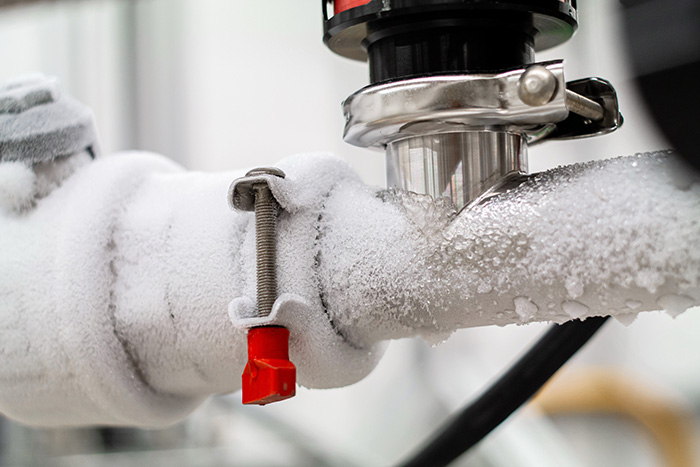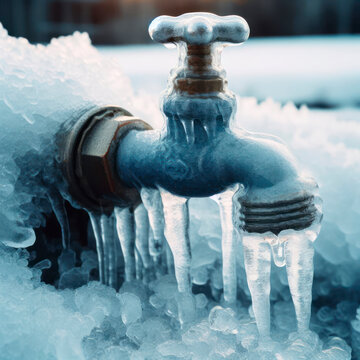Protecting Against Frozen Pipes in Winter: Critical Tips
Protecting Against Frozen Pipes in Winter: Critical Tips
Blog Article
Just how do you actually feel on the subject of Winter Plumbing Precautions: Preventing Frozen Pipes?

Winter can damage your pipes, especially by freezing pipelines. Below's how to stop it from taking place and what to do if it does.
Intro
As temperature levels drop, the threat of frozen pipes rises, potentially bring about costly fixings and water damage. Recognizing just how to stop frozen pipes is crucial for homeowners in chilly environments.
Prevention Tips
Insulating at risk pipes
Wrap pipes in insulation sleeves or utilize warm tape to protect them from freezing temperatures. Focus on pipelines in unheated or outside locations of the home.
Heating methods
Maintain indoor areas sufficiently heated, specifically areas with plumbing. Open up cabinet doors to enable cozy air to flow around pipes under sinks.
Exactly how to recognize icy pipelines
Look for decreased water circulation from faucets, uncommon odors or sounds from pipes, and visible frost on revealed pipes.
Long-Term Solutions
Architectural modifications
Consider rerouting pipes far from outside walls or unheated areas. Include added insulation to attics, basements, and crawl spaces.
Upgrading insulation
Buy premium insulation for pipelines, attic rooms, and wall surfaces. Correct insulation helps maintain consistent temperatures and decreases the danger of frozen pipelines.
Protecting Outside Plumbing
Yard hoses and outdoor faucets
Separate and drain pipes yard pipes before winter season. Install frost-proof spigots or cover outdoor faucets with shielded caps.
Recognizing Icy Pipelines
What triggers pipes to ice up?
Pipelines freeze when exposed to temperature levels listed below 32 ° F (0 ° C) for extended durations. As water inside the pipes ices up, it expands, taxing the pipe wall surfaces and potentially creating them to burst.
Threats and damages
Icy pipes can bring about supply of water disruptions, property damage, and costly repairs. Burst pipes can flooding homes and create extensive structural damage.
Indications of Frozen Piping
Identifying frozen pipes early can prevent them from bursting.
What to Do If Your Pipes Freeze
Immediate actions to take
If you suspect frozen pipes, keep taps open to relieve pressure as the ice melts. Make use of a hairdryer or towels taken in warm water to thaw pipes gradually.
Verdict
Protecting against frozen pipes calls for positive steps and fast actions. By comprehending the causes, indicators, and preventive measures, home owners can secure their pipes throughout cold weather.
5 Ways to Prevent Frozen Pipes
Drain Outdoor Faucets and Disconnect Hoses
First, close the shut-off valve that controls the flow of water in the pipe to your outdoor faucet. Then, head outside to disconnect and drain your hose and open the outdoor faucet to allow the water to completely drain out of the line. Turn off the faucet when done. Finally, head back to the shut-off valve and drain the remaining water inside the pipe into a bucket or container. Additionally, if you have a home irrigation system, you should consider hiring an expert to clear the system of water each year.
Insulate Pipes
One of the best and most cost-effective methods for preventing frozen water pipes is to wrap your pipes with insulation. This is especially important for areas in your home that aren’t exposed to heat, such as an attic. We suggest using foam sleeves, which can typically be found at your local hardware store.
Keep Heat Running at 65
Your pipes are located inside your walls, and the temperature there is much colder than the rest of the house. To prevent your pipes from freezing, The Insurance Information Institute suggests that you keep your home heated to at least 65 degrees, even when traveling. You may want to invest in smart devices that can keep an eye on the temperature in your home while you’re away.
Leave Water Dripping
Moving water — even a small trickle — can prevent ice from forming inside your pipes. When freezing temps are imminent, start a drip of water from all faucets that serve exposed pipes. Leaving a few faucets running will also help relieve pressure inside the pipes and help prevent a rupture if the water inside freezes.
Open Cupboard Doors
Warm your kitchen and bathroom pipes by opening cupboards and vanities. You should also leave your interior doors ajar to help warm air circulate evenly throughout your home.

I hope you liked our section on Preventing and dealing with frozen pipes. Thank you so much for taking a few minutes to read through our post. Kindly take the time to share this blog if you appreciated it. Thanks a bunch for being here. Revisit us soon.
Call Today Report this page